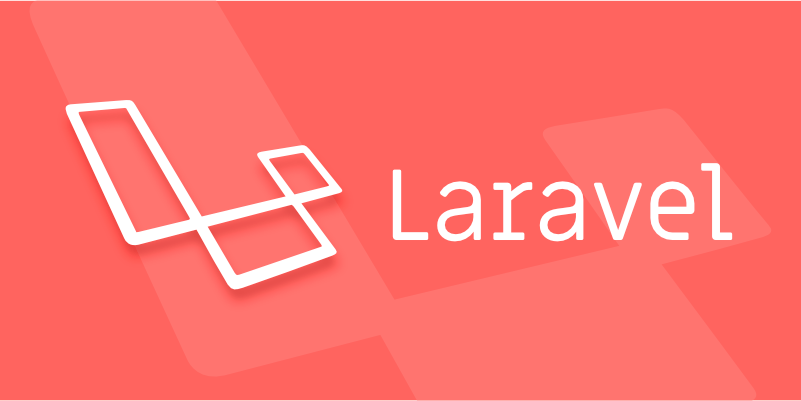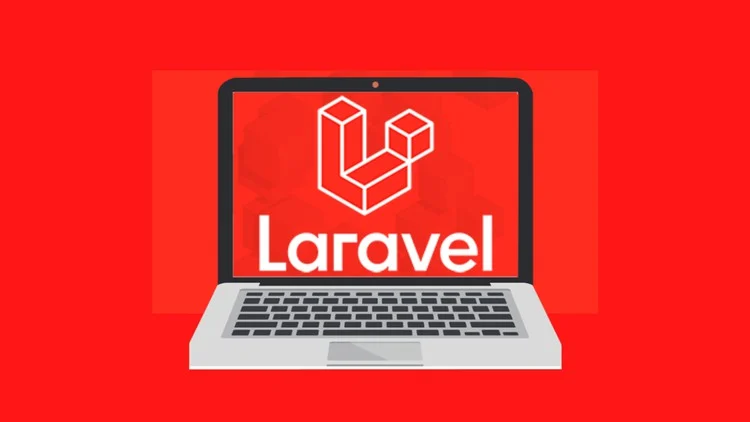How to extend Laravel's core components (e.g., custom guard).
Jul 16, 2025 am 02:53 AMTo create and register a custom Guard in Laravel, 1. Create a class that implements the Guard interface or inherits GuardHelpers; 2. Register the Guard with Auth::extend() in the service provider; 3. Add a new Guard configuration item in the auth.php configuration file; 4. To require special user acquisition logic, you also need to customize and register the UserProvider. After the above steps are completed, you can call the custom authentication logic by specifying the Guard name.

Laravel provides very flexible mechanisms to extend its core components, such as custom Guards, drivers, service providers, etc. If you need to implement specific authentication logic, such as using API Tokens or third-party OAuth login, extending the default Guard is a very practical approach.

Let's take a look at how to create and register a custom Guard in Laravel.
Create a custom Guard class
First, you need to create a class to implement Illuminate\Contracts\Auth\Guard interface, or, more simply, inherit the abstract class Illuminate\Auth\GuardHelpers , which has implemented most common methods.

For example, we create a class called TokenGuard :
// app/Services/Auth/TokenGuard.php
namespace App\Services\Auth;
use Illuminate\Auth\GuardHelpers;
use Illuminate\Contracts\Auth\Guard;
use Illuminate\Http\Request;
class TokenGuard implements Guard
{
use GuardHelpers;
protected $request;
public function __construct(Request $request)
{
$this->request = $request;
}
public function user()
{
if ($this->user) {
return $this->user;
}
$token = $this->request->header('Authorization');
// Suppose you have a TokenUserProvider to get the user based on the token if ($token && $user = $this->provider->retrieveByToken($token)) {
$this->user = $user;
}
return $this->user;
}
public function validate(array $credentials = [])
{
// Optional implementation}
public function id()
{
return $this->user() ? $this->user()->getAuthIdentifier() : null;
}
} This class mainly implements two core methods: user() and id() , which are used to obtain the unique identifiers of the currently logged-in user object and the user.

Register a custom Guard to the Laravel container
Next, you need to tell Laravel to use your Guard. You can register in a service provider's boot method using Auth::extend() method.
Usually we will create a new service provider, such as App\Providers\AuthServiceProvider :
php artisan make:provider AuthServiceProvider
Then register the Guard in the boot method of AuthServiceProvider :
use Illuminate\Support\Facades\Auth;
use Illuminate\Support\ServiceProvider;
use App\Services\Auth\TokenGuard;
class AuthServiceProvider extends ServiceProvider
{
public function boot()
{
Auth::extend('token', function ($app, $name, array $config) {
return new TokenGuard(
$app['request']
);
});
}
} Don't forget to add this service provider to the providers array in config/app.php .
Configure auth.php with new Guard
Open the config/auth.php file and add a new guard configuration item to the guards array:
'guards' => [
'web' => [
'driver' => 'session',
'provider' => 'users',
],
'api' => [
'driver' => 'token', // Use the guard name 'provider' => 'users',
],
], Now you can call your TokenGuard implementation via auth('api')->user() .
You may need to customize UserProvider at the same time
If the standard database user provider does not meet the needs, you can also customize UserProvider , make it implement Illuminate\Contracts\Auth\UserProvider interface, and use it with your Guard.
To register a custom UserProvider, you can use Auth::provider() method, for example:
Auth::provider('token', function ($app, array $config) {
return new TokenUserProvider($app['hash'], $config['model']);
}); In this way, you can use $this->provider->retrieveByToken() and other methods in Guard.
Basically that's it. As long as you understand the role and interface requirements of Guard, it is not complicated to expand, but it is indeed easy to ignore certain details, such as constructor dependency injection or provider binding methods. However, once the configuration is completed, various authentication methods can be flexibly supported.
The above is the detailed content of How to extend Laravel's core components (e.g., custom guard).. For more information, please follow other related articles on the PHP Chinese website!

Hot AI Tools

Undress AI Tool
Undress images for free

Undresser.AI Undress
AI-powered app for creating realistic nude photos

AI Clothes Remover
Online AI tool for removing clothes from photos.

Clothoff.io
AI clothes remover

Video Face Swap
Swap faces in any video effortlessly with our completely free AI face swap tool!

Hot Article

Hot Tools

Notepad++7.3.1
Easy-to-use and free code editor

SublimeText3 Chinese version
Chinese version, very easy to use

Zend Studio 13.0.1
Powerful PHP integrated development environment

Dreamweaver CS6
Visual web development tools

SublimeText3 Mac version
God-level code editing software (SublimeText3)
 How to set environment variables in PHP environment Description of adding PHP running environment variables
Jul 25, 2025 pm 08:33 PM
How to set environment variables in PHP environment Description of adding PHP running environment variables
Jul 25, 2025 pm 08:33 PM
There are three main ways to set environment variables in PHP: 1. Global configuration through php.ini; 2. Passed through a web server (such as SetEnv of Apache or fastcgi_param of Nginx); 3. Use putenv() function in PHP scripts. Among them, php.ini is suitable for global and infrequently changing configurations, web server configuration is suitable for scenarios that need to be isolated, and putenv() is suitable for temporary variables. Persistence policies include configuration files (such as php.ini or web server configuration), .env files are loaded with dotenv library, and dynamic injection of variables in CI/CD processes. Security management sensitive information should be avoided hard-coded, and it is recommended to use.en
 What is Configuration Caching in Laravel?
Jul 27, 2025 am 03:54 AM
What is Configuration Caching in Laravel?
Jul 27, 2025 am 03:54 AM
Laravel's configuration cache improves performance by merging all configuration files into a single cache file. Enabling configuration cache in a production environment can reduce I/O operations and file parsing on each request, thereby speeding up configuration loading; 1. It should be enabled when the application is deployed, the configuration is stable and no frequent changes are required; 2. After enabling, modify the configuration, you need to re-run phpartisanconfig:cache to take effect; 3. Avoid using dynamic logic or closures that depend on runtime conditions in the configuration file; 4. When troubleshooting problems, you should first clear the cache, check the .env variables and re-cache.
 How to make PHP container support automatic construction? Continuously integrated CI configuration method of PHP environment
Jul 25, 2025 pm 08:54 PM
How to make PHP container support automatic construction? Continuously integrated CI configuration method of PHP environment
Jul 25, 2025 pm 08:54 PM
To enable PHP containers to support automatic construction, the core lies in configuring the continuous integration (CI) process. 1. Use Dockerfile to define the PHP environment, including basic image, extension installation, dependency management and permission settings; 2. Configure CI/CD tools such as GitLabCI, and define the build, test and deployment stages through the .gitlab-ci.yml file to achieve automatic construction, testing and deployment; 3. Integrate test frameworks such as PHPUnit to ensure that tests are automatically run after code changes; 4. Use automated deployment strategies such as Kubernetes to define deployment configuration through the deployment.yaml file; 5. Optimize Dockerfile and adopt multi-stage construction
 Explain Laravel Eloquent Scopes.
Jul 26, 2025 am 07:22 AM
Explain Laravel Eloquent Scopes.
Jul 26, 2025 am 07:22 AM
Laravel's EloquentScopes is a tool that encapsulates common query logic, divided into local scope and global scope. 1. The local scope is defined with a method starting with scope and needs to be called explicitly, such as Post::published(); 2. The global scope is automatically applied to all queries, often used for soft deletion or multi-tenant systems, and the Scope interface needs to be implemented and registered in the model; 3. The scope can be equipped with parameters, such as filtering articles by year or month, and corresponding parameters are passed in when calling; 4. Pay attention to naming specifications, chain calls, temporary disabling and combination expansion when using to improve code clarity and reusability.
 PHP development user permission management monetization PHP permission control and role management
Jul 25, 2025 pm 06:51 PM
PHP development user permission management monetization PHP permission control and role management
Jul 25, 2025 pm 06:51 PM
User permission management is the core mechanism for realizing product monetization in PHP development. It separates users, roles and permissions through a role-based access control (RBAC) model to achieve flexible permission allocation and management. The specific steps include: 1. Design three tables of users, roles, and permissions and two intermediate tables of user_roles and role_permissions; 2. Implement permission checking methods in the code such as $user->can('edit_post'); 3. Use cache to improve performance; 4. Use permission control to realize product function layering and differentiated services, thereby supporting membership system and pricing strategies; 5. Avoid the permission granularity is too coarse or too fine, and use "investment"
 How to build a content payment platform through PHP How to implement PHP paid reading system
Jul 25, 2025 pm 06:30 PM
How to build a content payment platform through PHP How to implement PHP paid reading system
Jul 25, 2025 pm 06:30 PM
To build a PHP content payment platform, it is necessary to build a user management, content management, payment and permission control system. First, establish a user authentication system and use JWT to achieve lightweight authentication; second, design the backend management interface and database fields to manage paid content; third, integrate Alipay or WeChat payment and ensure process security; fourth, control user access rights through session or cookies. Choosing the Laravel framework can improve development efficiency, use watermarks and user management to prevent content theft, optimize performance requires coordinated improvement of code, database, cache and server configuration, and clear policies must be formulated and malicious behaviors must be prevented.
 How to build a log management system with PHP PHP log collection and analysis tool
Jul 25, 2025 pm 08:48 PM
How to build a log management system with PHP PHP log collection and analysis tool
Jul 25, 2025 pm 08:48 PM
Select logging method: In the early stage, you can use the built-in error_log() for PHP. After the project is expanded, be sure to switch to mature libraries such as Monolog, support multiple handlers and log levels, and ensure that the log contains timestamps, levels, file line numbers and error details; 2. Design storage structure: A small amount of logs can be stored in files, and if there is a large number of logs, select a database if there is a large number of analysis. Use MySQL/PostgreSQL to structured data. Elasticsearch Kibana is recommended for semi-structured/unstructured. At the same time, it is formulated for backup and regular cleaning strategies; 3. Development and analysis interface: It should have search, filtering, aggregation, and visualization functions. It can be directly integrated into Kibana, or use the PHP framework chart library to develop self-development, focusing on the simplicity and ease of interface.
 How to create a helper file in Laravel?
Jul 26, 2025 am 08:58 AM
How to create a helper file in Laravel?
Jul 26, 2025 am 08:58 AM
Createahelpers.phpfileinapp/HelperswithcustomfunctionslikeformatPrice,isActiveRoute,andisAdmin.2.Addthefiletothe"files"sectionofcomposer.jsonunderautoload.3.Runcomposerdump-autoloadtomakethefunctionsgloballyavailable.4.Usethehelperfunctions






